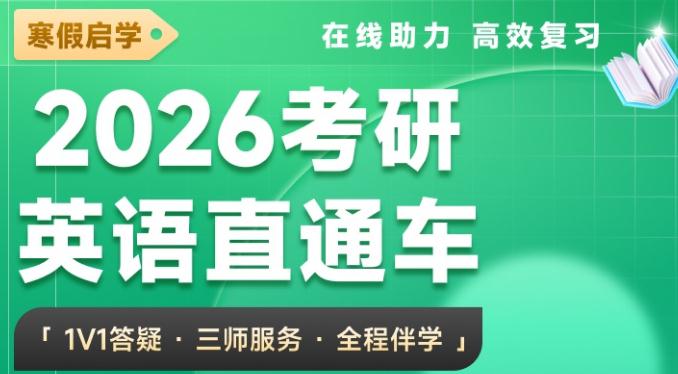1998-2022 ChinaKaoyan.com Network Studio. All Rights Reserved. 沪ICP备12018245号
2017考研英语阅读精选:北京限制人口数量
Beijing to cap population at 23 mln by 2020
2020年,北京人口将限制在2300万以内
BEIJING, Jan. 24 -- Beijing will cap its population at 23 million by 2020, officials said during the annual local "two sessions".
2月24日,北京-在每年召开的两会期间,官员称,2020年,北京将把人口控制在2300万以内,
The two sessions refer to meetings of the Municipal People’s Congress, the local legislature, and the Municipal Committee of the Chinese People’s Political Consultative Conference, a local political advisory body.
两会指的市人民代表大会会议和市中国人民政治协商会议,前者是一个本地立法机构,后者是当地政治咨询机构。
In the next five years, Beijing will continue to relocate population from down town areas to suburban areas, said mayor Wang Anshun. Permanent population in the downtown areas will drop by 15 percent from 2014.
在接下来的五年内,北京将会继续将城镇的人口安置到市区,王安顺市长说。自2014年以来,城镇固定人口将会减少15%。
The population ceilings have been made according to the maximum capacity of resources such as water, sources said.
据消息源称,这一人口上限的制定依据是比如像水之类的能源最大承受力。
Beijing has seen slower population growth in recent years thanks to the efforts in adjustment of city functions and relocation of relevant industries. In the last five years,annual growth rate was 2 percent, compared with 5 percent in previous years, statistics show.
由于城市功能的调整和相关工业的重新布局,近年来北京城市人口的增长速度已经下降。数据显示,相比前些年的5%,过去的五年时间里,年增长率是2%。
In 2015, Beijing had 21.7 million permanent residents. Beijing aims to limit its population within 22 million in 2016.
2015年,北京拥有2170万常住居民。北京目标在2016年把人口限制在2200万以内。
In the past decades, Beijing has repeatedly failed its population control targets, as people from across the country flocked to the national capital, attracted by its advantages in economic, cultural, educational and medical resources, among others.
过去的几十年里,因为全国各地的人口被首都的经济、文化、教育和医疗资源吸引而涌入首都,北京的人口控制目标总是不断落空。
Increasing population adds pressure on local resources such as water and worsens traffic congestion and environment problems.
持续增加的人口给本地例如水资源的资源增添压力,也使得交通拥堵和环境问题严重。
"It has been difficult to simply force out the people, without finding proper destinations for the relocated population," said vice mayor Li Shixiang, adding that a coordinated development plan of Beijing-Tianjin-Hebei has come as a desirable solution.
“在没有为重新安置的人口找到合适的目的地之前,很难仅仅逼迫人们离开北京,”李士祥副市长说,他同时补充道,北京-天津-河北合作发展计划是理想解决方案。
Lu Yan, director of the Beijing Municipal Development and Reform Commission, the economic planning body, said Beijing will continue with its relocation plan, and divert its population to new towns and outlying regions.
北京市发改委经济计划部主任陆燕说,北京将会继续它的重分配计划,把人口转移到新的城镇和边远地区。
In 2016, about 300 companies, mainly manufacturing businesses, will be moved out of the city propery. In the next five years, large logistics bases and wholesale markets will be moved out from the areas within the fourth ring road.
2016年,大约300家主要是制作业为主的公司将会被移出城市所有。在未来的五年里,大数据公司和批发市场也会移出四环。
Measures will also be taken to ease the demographic pressure on downtown regions.
减轻城市人口压力的措施也会被采取。
The Xicheng district will reduce its population by 3 percent in 2016, while the Dongcheng district will limit its population by relocating hospitals and cutting the number of recruitsin the technical schools.
2016年,西城会减少3%人口,同时,东城将通过重新安置医院,减少技术学校数量的手段来限制人口。
Meanwhile, Beijing will continue to move its municipal administrative organs from downtown area to east suburban Tongzhou district next year, said mayor Wang Anshun.
同时,明年,北京将会继续把它的市行政机构从城镇地区移到东郊的通州区,王安顺市长说。
By 2017, some of Beijing’s administrative organs will be moved into Tongzhou, he said.
他说,2017年,北京的一些行政机构会被移到通州区。
来源未注明“中国考研网\考研信息网”的资讯、文章等均为转载,本网站转载出于传递更多信息之目的,并不意味着赞同其观点或证实其内容的真实性,如涉及版权问题,请联系本站管理员予以更改或删除。如其他媒体、网站或个人从本网站下载使用,必须保留本网站注明的"稿件来源",并自负版权等法律责任。
来源注明“中国考研网”的文章,若需转载请联系管理员获得相应许可。
联系方式:chinakaoyankefu@163.com
- 2026考研英语全程班 6班
- 权威高配师资亲授技巧,教研千锤百炼科学提分。直录播课相结合精讲互动二合一,专业团队精细化作文批改。讲练结合,随学随练稳步提升。支持试听~
- 主讲团队:王江涛、谭剑波、董仲蠡、许聪杰、陈志超、潘赟、郑艳彤、易熙人

扫码关注
了解考研最新消息












